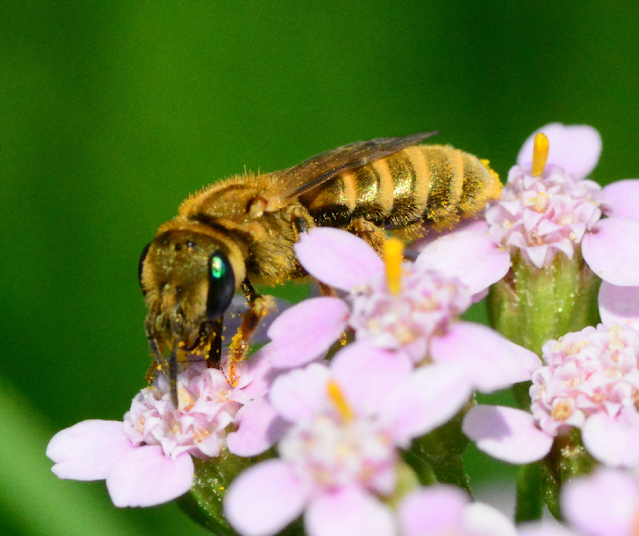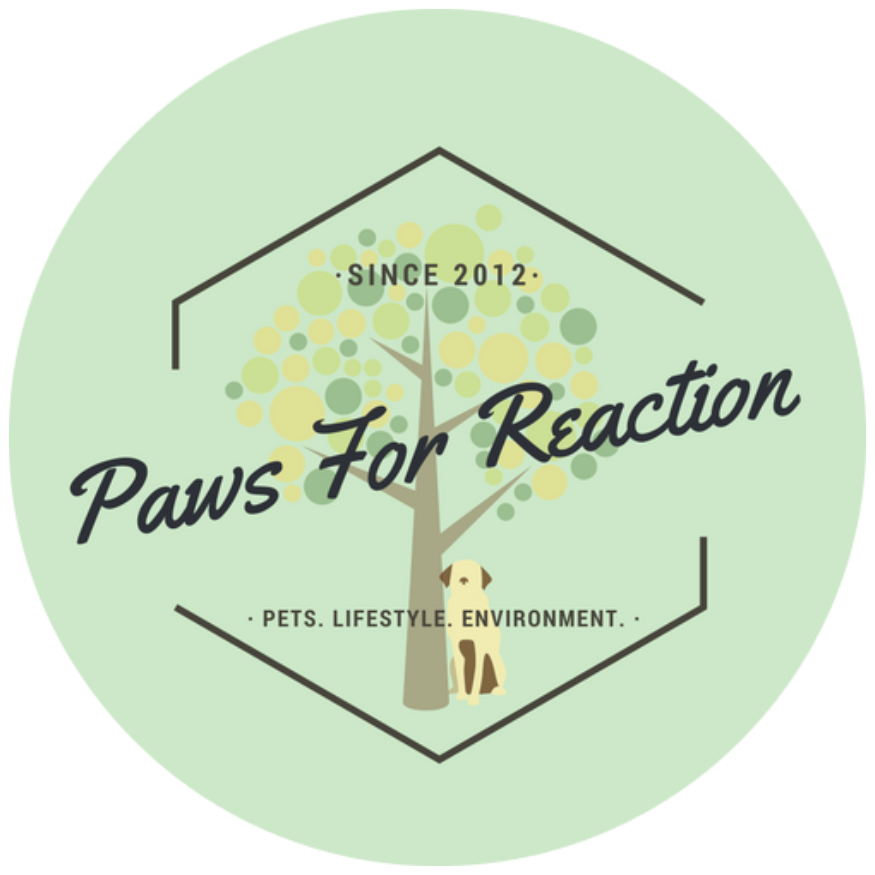.png)
World Honey Bee Day: How you can help three native Ontario bee species in decline
.png) | |||
|
Guest blog: Three native Ontario bee species in decline and how you can help
Today, August
20th, we celebrate the little, unsung heroes of our
ecosystems. It's the 13th annual World Honey Bee Day! The first World Honey Bee Day was held in 2009, and since then, we
have been giving a quiet nod of thanks on the third Saturday of August to
honey bees and their caretakers, the beekeepers.
Bees play a vital
role in pollination in Ontario. They help to ensure that plants can produce the fruits
and vegetables that we rely on for food. Without bees and other pollinating
super-insects, our food supply would be greatly diminished. Don't forget how their pollination assists other plants and flowers used for medications and other products we take for granted.
Unfortunately the population of
these buzzworthy heroes has been in decline in recent years due
to pesticide use, habitat loss, and climate change. It's had an understandably
devastating impact on our environment.
Ontario’s Three Unsung Heroes
Let's take a look at three of Ontario’s most under-appreciated pollinators: the Gypsy
Cuckoo, Rusty-Patched, and Yellow-Banded Bumblebees, bee species that are in decline in Ontario. Canada is home to over 850 species of bees, but these three of Ontario’s own bee species are in jeopardy.
Gypsy Cuckoo bumblebee
This medium to
large-sized bumblebee ranges from 12 to 18mm and is found primarily in Europe,
Asia, and North America. Once found in prolific numbers in Canada and recorded
in all provinces and territories aside from Nunavut, the Gypsy Cuckoo is, as of 2014,
listed as an endangered species.
In recent years, sightings have been scarce, and the last record of a sighting in Ontario was way back in 2008. Primary threats include the spread of viruses from other bee colonies, loss of habitat, climate change, and pesticide use.
Rusty-patched bumblebee
Named after the males
that sport a rusty, reddish patch on their backs, the Bombus affinis- aka Rusty-patched bumblebee- is
an integral species in the prairies and grasslands of North America.
This species of
bumblebee contributes to the production of fruits and seeds that sustain other
wildlife through pollination. Dutchman's breeches and other organisms depend on
them for food, including ant species that eat the seeds of Dutchman's breeches.
Once widespread and commonly found, the species declined dramatically in the last 50 years and is also listed as an endangered species. The loss of their habitat is largely due to the majority of grasslands and prairies developed for human use such as towns, farms, or highways. Other significant contributors include pesticide use, climate change, and viruses from neighbouring commercial greenhouses.
Yellow-banded bumblebee
The Yellow-bandedbumblebee, Bombus terricola, was once found in great numbers from the
east of the Rockies to Newfoundland but is currently a species at risk in Ontario. However, in the 1990s, their populations
started to decline dramatically. Worse, they now are nowhere to be found in
south and central Canada in recent years. Their official status in Ontario is Special Concern, meaning the "species lives in the wild in Ontario, is not endangered or threatened, but may become threatened or endangered due to a combination of biological characteristics and identified threats."
Pollinating wildflowers and crops such as potatoes, raspberries, and alfalfa, these bees are an important part of the ecosystem which is sadly being disrupted. The exact cause of the decline in Yellow-banded bumblebees is up for debate, but the buzz is that possible causes include pesticide use, climate change, habitat loss due to urban development, and pathogens from commercial greenhouses.
Sightings of rare or endangered species should be reported to The Natural Heritage Information Centre (NHIC) so we can better assess the health of the species.
How can you help save the bees?
- Plant pollinator-friendly native plants and flowers
- Support local beekeepers and purchase their products
- Don’t use pesticides and don't buy products that use pesticide-seed: shop organic and non-GMO
- If you see a bee swarm, leave them alone- they will disband on their own
- Bee observant! Learn how you can help scientists monitor pollinators
- Set up freshwater sources around the yard for thirsty bees
- We need flowers, vegetation, and gardens more than we need lawns- so plant a garden. You can even purchase a bee seed pack
- Don’t weed your lawn- bees love dandelions and other common weeds
- Adopt a worker bee! Inspire the next generation of environmentalists!
- Play the game I Spy Pollinators to get kids excited about honey bees! Print the PDF or save it on your Smart Phone and get started
- Support Ontario Nature and get involved with one of their campaigns.
Ontario Nature's buzz-worthy accomplishments
Their is no better support for bees in Ontario than Ontario Nature. Since 1931, Ontario Nature has been fighting for environment justice and wildlife conservation, as well as educating the general public about their many campaigns. More than 155 participant organizations from throughout Ontario make up Ontario Nature's 30,000+ users and supporter base. The goal is clear: to create a simple Ontario where future generations will be inspired by and sustained by nature.
Some of their current initiatives to help save the bees include:
- Encouraging Ontarians to
plant native species. We need fewer lawns and more pollinator habitats. Check out Ontario's Pollinator Pals to learn the native plants and flowers to plant for bees and other pollinators.
- Advocating for the outlawing of pesticides in Ontario.
- Raise awareness about the decline of Ontario's pollinating insects social media,
events, and more.
- This is the big bad buzzword: Bill 132. Ontario Nature is fighting hard to oppose regulatory changes in
Bill 132, which would encourage
the overuse of neonicotinoid pesticides doing away with accountability measures. This overuse of pesticides would line the pockets of some, but have a devastating impact of many bee and pollinator species- and bee keepers!
Thanks to Ontario Nature and the Ontario Nature Youth Council, Bee Cities and schools are widely found across Canada. From Canada’s second Bee City, the City of Stratford to the City of Oshawa, Canada’s 22nd Be City, cities all over the country have pledged to educate, conserve, and create healthy habitats for our buzzing pollinators.
Last buzz
For decades, OntarioNature has been working to safeguard our environment and the world we live in.
Members of Ontario Nature share the honour with Nature Canada as one of the best charities of 2019- now that's something to bee proud of!
More than 110 million acres of Protected Places have been established in Canada because of the support of members and donors- they make and fundraise for donations and get their hands dirty, protecting the innumerable species that call those habitats their home.
With every
contribution made, every petition signed, and every action performed, we do
our part to bee better humans and safeguard our wildlife and environment in Ontario. Get involved! Subscribe to Ontario Nature’s magazine! Better yet, make a donation to support
Ontario’s wildlife. Thank you for celebrating Honey Bee Day and for bee-ing a caring pollinator protector!
Like Paws for Reaction on Facebook
Follow @PawsForReaction on Twitter
Follow @PawsForReaction on Instagram
Follow my blog and subscribe in the sidebar >>

.png)
.png)
.png)
.png)




















1 Comentarios
I didn't know that there was a day called "World Honey Bee Day" and also bees are in decline. Thanks for writing this and sharing new info!
ReplyDelete